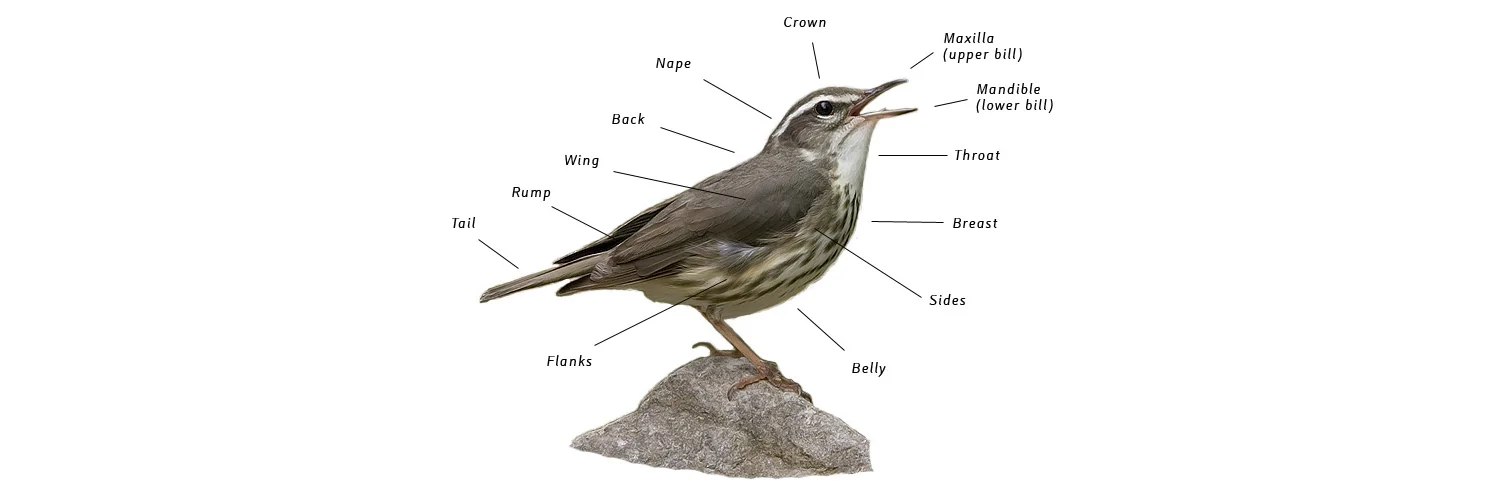Bird Identification made Easier
When you see unfamiliar birds in your yard how do you go about identifying them? Do you just look with your naked eye? Do you take notes? What is it exactly you are looking at to make your I.D.? With more than 800 species of birds in the U.S. and Canada, it’s easy for a beginning birdwatcher to feel overwhelmed by possibilities.
Here are a few tips for the “backyard birder” to identify birds you see at your feeders and around the yard. Then when you’ve mastered a few techniques you may want to graduate to birdwatching in parks and on greenways, or wherever you go.
1. Using Binoculars Correctly
Using binoculars and using them correctly is essential. Even within 10 yards birds may be difficult to identify. Key I.D. features may be missed with the naked eye. Binos are a tool so the more you practice with them the better you will be. Immediately bringing the binoculars to your eyes then looking for the bird is a common mistake. The magnification and field of view can easily disorient you to your surroundings. While your eyes are locked on the bird raise the binoculars to your eyes and then focus on the bird. This method will immediately improve your bino skills. Also, check to make sure the binos are fitted to the distance between your eyes to avoid the dark areas that may appear. And all too often people will not get the most out of their bino because they haven’t adjusted the diopter, making the image always a little blurry. Every decent bino will have a diopter which can be found, typically, on the right ocular, or eyepiece. By following these two steps you can successfully “balance” the bino to your eyes.
A. With the binos at your eyes place your right hand over the right lens. Using the center focus knob focus on an object with the left eye and left lens.
B. When clearly focused switch to covering the left lens with your hand and focus your right eye on the same object with the diopter ring located on the right ocular. When you have clearly focused with the diopter take note of the hash marks located just below the diopter ring with + and – indicators. This is the location that your diopter should be in when using your binos. Occasionally check to see it hasn’t slipped from this mark. If you have trouble with this bring in your binos and we’ll help you with the process.
Now that you have your binos handy and adjusted you’re ready for some birdwatching tips.
2. “You can observe a lot just by watching” Yogi Berra
As simple as this phrase is there is a lot of truth to it. Instead of looking at the bird briefly then quickly opening your field guide to find it spend more time observing. When I first started watching birds at home I kept my binos and a pad and pen together. I could look at the bird, get focused, and then jot down features of the bird that stood out while still looking at the bird. The better I got I was able to commit these features to memory. After the bird has moved on is when you will want to open your field guide and look at your notes. Try to narrow down your search based on what information you gathered.
Your Notes Should Include the 4 Keys to I.D.
Size and Shape- Is the bird Chickadee, Cardinal, or Blue jay size? If you saw its silhouette what stands out about the shape? Is there a crest, long or short tail, long legs or short legs? Is it bulky like a Robin or slim like a Mockingbird?
Colors and Patterns- Note primary colors and their respective location. Patterns might include vertical or horizontal stripes, streaks, or a patch. Examples: A Yellow-rumped warbler has a yellow patch on the rump. A male Rose-breasted grosbeak has a rosey red patch on its breast.
Behavior- Behavior is often overlooked but oh so important. What was the bird doing? Was it at a feeder, or on the ground? Did it fly off a perch and grab an insect? Did it attempt to stay concealed in a hedge, or was it bold and in the open? Was it an individual or in a group?
Habitat- Now, you should already know your habitat if it’s your yard but do keep that in mind. It’s very important. Is the habitat wooded, or suburban yards, meadow, lake, pond or stream? Or is it combinations of these? Keying in on the habitat can possibly verify or deny a species. You’re not likely to see a Great Blue heron or Meadowlark in the woods.
All these points are to be noticed and considered when trying to I.D. a bird. As your experience and knowledge grows these keys will become second nature.
Experienced birdwatchers can identify many species from just a quick look using these 4 keys to visual I.D.

